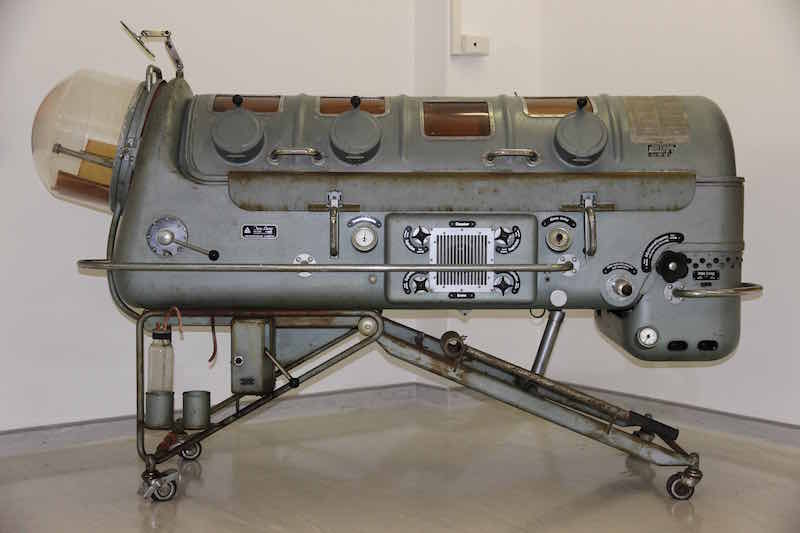Housed within the University of Cape Town’s Department of Anaesthesia, this museum showcases Africa's finest early anaesthesia equipment collection. Its artefacts date back to 1847 — just one year after Morton’s historic public demonstration of ether anaesthesia in Boston (October 1846).
Recognised as the official museum of the South African Society of Anaesthesiologists (SASA), it includes a dedicated section on the Society’s history, including a display commemorating SASA’s hosting of the 14th World Congress of Anaesthesiology in Cape Town in 2008.

Highlights of the Collection
Anaesthetic and analgesia delivery systems designed by:
-
Murphy (1847)
-
Esmarch (1877)
-
Schimmelbusch (1897)
-
Hewitt (1901)
-
Vernon Harcourt (1901)
-
Ombrédanne (1908)
-
Boyle (1917–1933)
-
Junkers (1867 and later versions)
-
Shipway (1916)
-
Pinson’s “ether bomb” (1926)
-
McKesson (1920s and 1930s)
-
De Caux (1930)
-
King Thermanester (1936)
Vaporizers, including:
-
Copper Kettle
-
Rowbotham inhaler
-
Fluotec models Mark 1–6
-
Goldman’s vinesthene and halothane vaporizers
-
Dräger Vapor Halothan (1960)
Ventilators, including:
-
Bird models Mark 1, 2, 3, 4, 7, 7a, and 8
-
Manley
-
Cyclator
-
Dräger Iron Lung (model E52)
-
Emerson Cuirass ventilator
Battlefield resuscitators, such as:
-
Krieselman resuscitator (1943)
-
USSR model (1963)
-
An Ambubag designed for chemical warfare
Other notable items:
-
Anaesthetic machines and monitors used at Groote Schuur Hospital (1940–1984)
-
A recently identified prototype “LMA” developed by Beverly Leech in Canada (1936)
South African contributions to anaesthesia equipment:
-
The Taurus Blood Warmer (named after Professor Bull)
-
The Cape Town and Stellenbosch paediatric breathing circuits
-
The Samson neonatal resuscitator
-
Humphrey ADE and Miller Maxima breathing systems

History of the Collection
The museum’s roots date back to 1956, when Dr CS Jones (then Head of Department) and Dr Jack Abelsohn (SASA founder and first archivist) recognised the historical value of early anaesthetic equipment in their possession.
In 1957, Dr Lindsay van der Spuy donated a significant collection of equipment, much of it from South Africa’s early anaesthesia pioneers:
-
Dr Bampfylde Daniel — the country’s first specialist anaesthetist
-
Dr Royden Muir — a New Zealander who emigrated to Cape Town after WWI
Both taught anaesthesia to medical students at UCT.
Under Professor Arthur Bull (appointed Head in 1969), the collection was curated, catalogued, and displayed in the UCT Medical School. His successor, Professor Gaisford Harrison, continued the expansion of the collection and, in 1987, appointed Dr Naginal Parbhoo as Honorary Curator.
Dr Parbhoo visited numerous hospitals around the Cape, collecting additional historic equipment. After UCT’s move to the new Groote Schuur Hospital in 1993, he secured sponsorship for eight custom-built oak and glass display cabinets. In honour of his work, the museum was officially named the Nagin Parbhoo History of Anaesthesia Museum by Professor Michael James.
Dr Parbhoo passed away in 2009 after a long battle with leukaemia. He was succeeded by Associate Professor Peter Gordon, who currently serves as Honorary SASA Archivist and Curator. Under his guidance, the collection has continued to grow, and the number of display cabinets has doubled.
For more information click here.
Visiting the Museum
The museum is located within a working department, and visits are by appointment only.
To arrange a visit, please contact:
-
Peter Gordon (Honorary Curator) — peter.gordon@uct.ac.za
-
Dr Robert Nieuwveld (Assistant Honorary Curator) — robert.nieuwveld@uct.ac.za
-
Mrs C. Wyngaard (Department Secretary) — +27 21 404 5004
